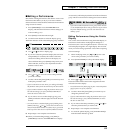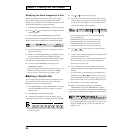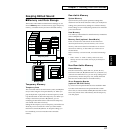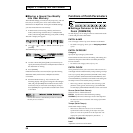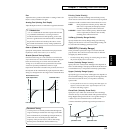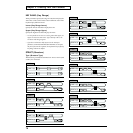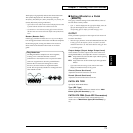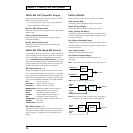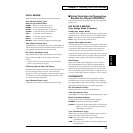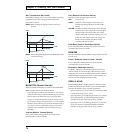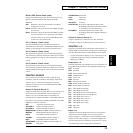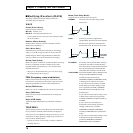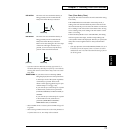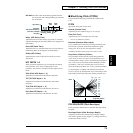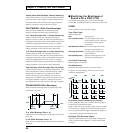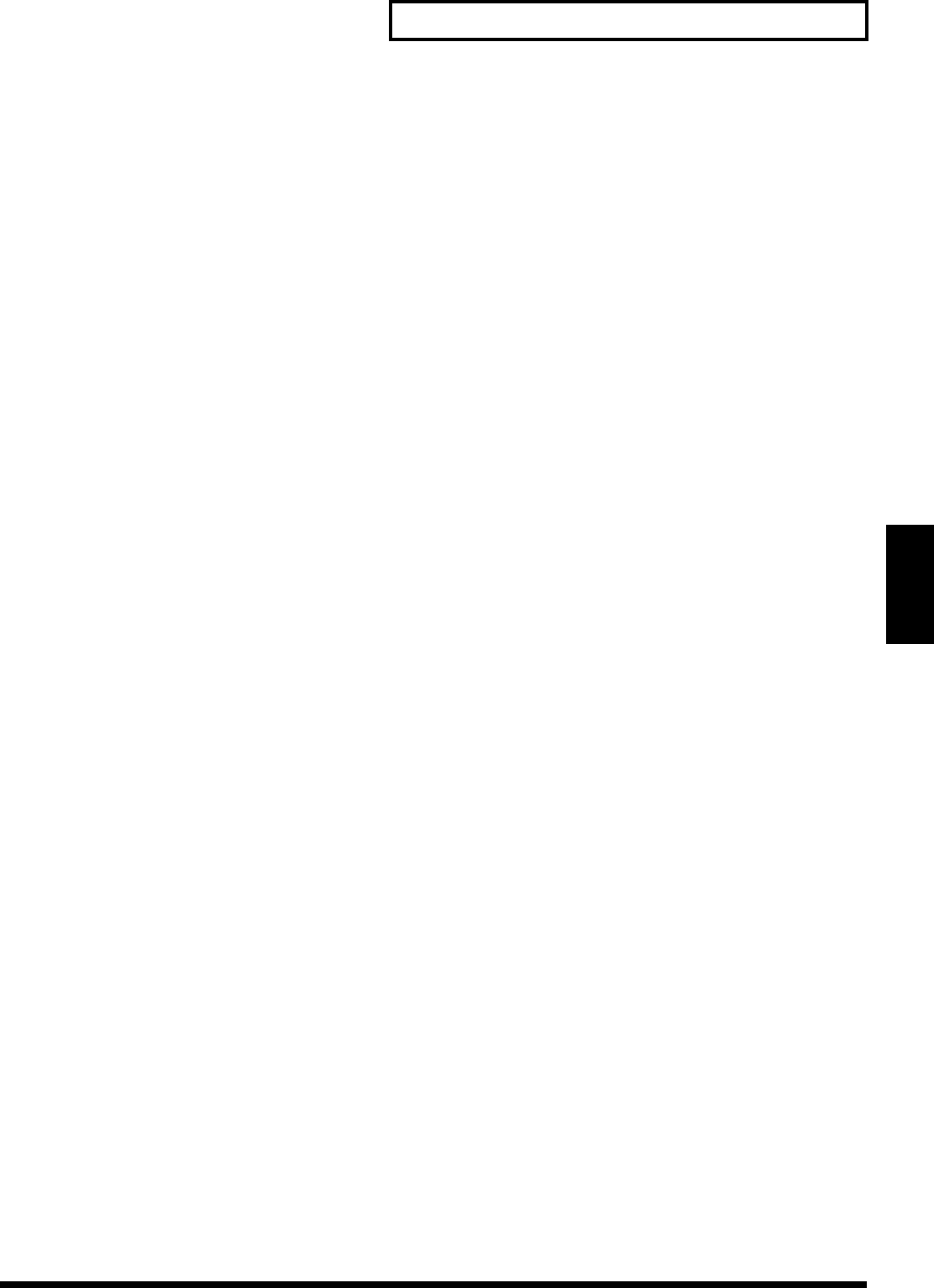
73
Chapter 3. Creating Your Own Sounds
Chapter 3
PATCH REVERB
These parameters control the Reverb effect of the Patch.
Type (Reverb/Delay Type)
Select the type of Reverb effect.
ROOM1: dense reverb with short decay
ROOM2: sparse reverb with short decay
STAGE1: reverb with greater late reverberation
STAGE2: reverb with strong early reflections
HALL1: reverb with clear reverberance
HALL2: reverb with rich reverberance
DELAY: a conventional delay
PAN-DLY: a delay with echoes that move left and right
Time (Reverb/Delay Time)
Adjust the time of reverberation. If you have selected DELAY
or PAN-DLY, this parameter will adjust the time delay from
the original sound until the first echo will sound.
Fbk (Delay Feedback Level)
Adjust the amount of delayed sound that is returned (fed
back) to the delay. Higher values result in more delay
repeats.
* If you have selected any one of the Reverb types (ROOM1–
HALL2), this parameter has no effect.
HF Damp (Reverb/Delay HF Damp)
Adjust the frequency above which the reverberant sound will
be cut. As the frequency is set lower, more of the high
frequencies will be cut, resulting in a softer and more muted
reverberance. If you do not want the high frequencies to be
cut, set this parameter to BYPASS.
Level (Reverb/Delay Level)
Adjust the volume of the reverberant (or delayed) sound.
■
Using Controllers to Change How
Sounds Are Played (CONTROL)
The parameters in this group determine how the controllers
will function.
KEY MODE & BENDER
(Key Assign Mode & Bender)
Assign (Key Assign Mode)
Specify how notes will be played. When playing a solo instrument
Patch (such as sax or flute) it is effective to use a setting of SOLO.
POLY: Two or more notes can be played simultaneously.
SOLO: Only one note will sound at a time.
Legato (Solo Legato Switch)
Turn this parameter ON when you use Solo Legato, and OFF when
you do not. Solo Legato is a function that works only when the Key
Assign Mode is SOLO. When Solo Legato is ON, pressing a key
while a previous key is already pressed will cause the note to
change pitch to the pitch of the newly pressed key while continuing
to sound. This is effective when you wish to simulate performance
techniques such as a guitarist’s hammering on and pulling off.
Bend Range
Specify the amount of pitch change that will occur when you
move the Pitch Bend Lever. The left value specifies the pitch
change that will occur when the lever is moved fully left. The
right value specifies the pitch change that will occur when the
lever is moved fully right. The left value has a range of -48–0 (-4–
0 octaves), and the right value has a range of 0–+12 (0–1 octaves).
PORTAMENTO
Portamento is a function that causes the pitch to change
smoothly from one note to the next played note. When the
Key Assign Mode is SOLO, this is effective when simulating
performance techniques such as a violinist’s glissando.
Sw (Portamento Switch)
Set this to ON when you wish to use Portamento.
Time (Portamento Time)
Adjust the time over which the pitch will change to the new pitch.
Mode (Portamento Mode)
Select the way in which Portamento will be applied.
NORMAL: Portamento will always be applied.
LEGATO: Portamento will be applied only for notes played
legato (i.e., when you press the next key before
releasing the previous key.
Type (Portamento Type)
Select the way in which the pitch difference between the two
notes will be related to the time of movement.
RATE: Time of movement will change in relation to the
pitch difference.
TIME: Time of movement will be constant, regardless of the
pitch difference.



